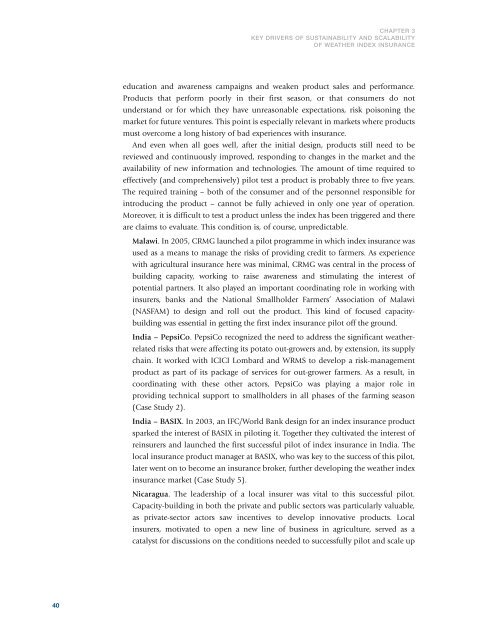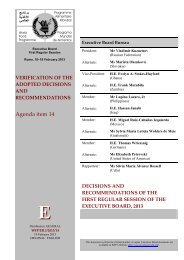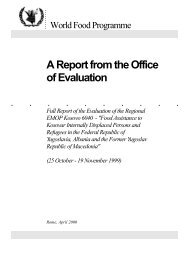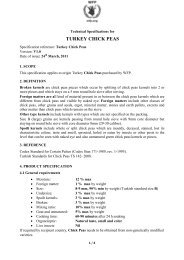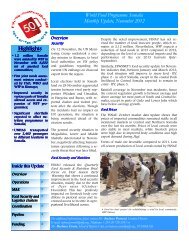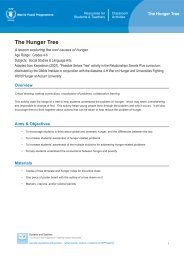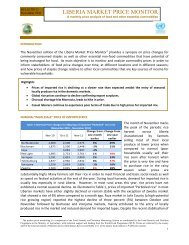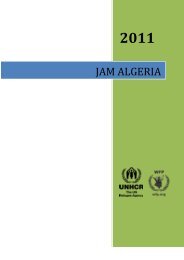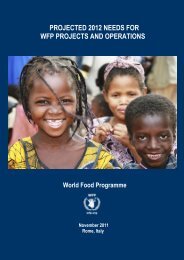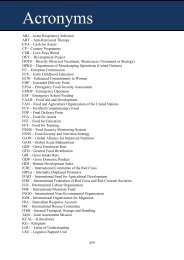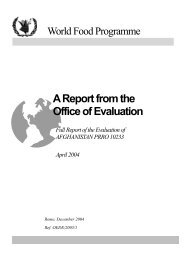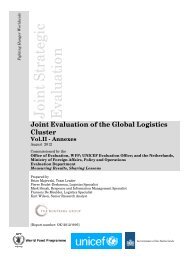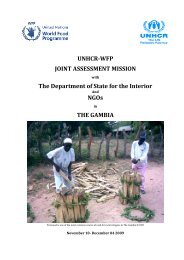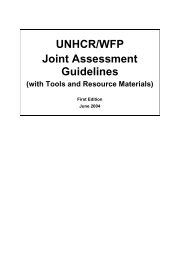The Potential for Scale and Sustainability in Weather Index Insurance
The Potential for Scale and Sustainability in Weather Index Insurance
The Potential for Scale and Sustainability in Weather Index Insurance
You also want an ePaper? Increase the reach of your titles
YUMPU automatically turns print PDFs into web optimized ePapers that Google loves.
40<br />
CHAPTER 3<br />
KEY DRIVERS OF SUSTAINABILITY AND SCALABILITY<br />
OF WEATHER INDEX INSURANCE<br />
education <strong>and</strong> awareness campaigns <strong>and</strong> weaken product sales <strong>and</strong> per<strong>for</strong>mance.<br />
Products that per<strong>for</strong>m poorly <strong>in</strong> their first season, or that consumers do not<br />
underst<strong>and</strong> or <strong>for</strong> which they have unreasonable expectations, risk poison<strong>in</strong>g the<br />
market <strong>for</strong> future ventures. This po<strong>in</strong>t is especially relevant <strong>in</strong> markets where products<br />
must overcome a long history of bad experiences with <strong>in</strong>surance.<br />
And even when all goes well, after the <strong>in</strong>itial design, products still need to be<br />
reviewed <strong>and</strong> cont<strong>in</strong>uously improved, respond<strong>in</strong>g to changes <strong>in</strong> the market <strong>and</strong> the<br />
availability of new <strong>in</strong><strong>for</strong>mation <strong>and</strong> technologies. <strong>The</strong> amount of time required to<br />
effectively (<strong>and</strong> comprehensively) pilot test a product is probably three to five years.<br />
<strong>The</strong> required tra<strong>in</strong><strong>in</strong>g – both of the consumer <strong>and</strong> of the personnel responsible <strong>for</strong><br />
<strong>in</strong>troduc<strong>in</strong>g the product – cannot be fully achieved <strong>in</strong> only one year of operation.<br />
Moreover, it is difficult to test a product unless the <strong>in</strong>dex has been triggered <strong>and</strong> there<br />
are claims to evaluate. This condition is, of course, unpredictable.<br />
Malawi. In 2005, CRMG launched a pilot programme <strong>in</strong> which <strong>in</strong>dex <strong>in</strong>surance was<br />
used as a means to manage the risks of provid<strong>in</strong>g credit to farmers. As experience<br />
with agricultural <strong>in</strong>surance here was m<strong>in</strong>imal, CRMG was central <strong>in</strong> the process of<br />
build<strong>in</strong>g capacity, work<strong>in</strong>g to raise awareness <strong>and</strong> stimulat<strong>in</strong>g the <strong>in</strong>terest of<br />
potential partners. It also played an important coord<strong>in</strong>at<strong>in</strong>g role <strong>in</strong> work<strong>in</strong>g with<br />
<strong>in</strong>surers, banks <strong>and</strong> the National Smallholder Farmers’ Association of Malawi<br />
(NASFAM) to design <strong>and</strong> roll out the product. This k<strong>in</strong>d of focused capacitybuild<strong>in</strong>g<br />
was essential <strong>in</strong> gett<strong>in</strong>g the first <strong>in</strong>dex <strong>in</strong>surance pilot off the ground.<br />
India – PepsiCo. PepsiCo recognized the need to address the significant weatherrelated<br />
risks that were affect<strong>in</strong>g its potato out-growers <strong>and</strong>, by extension, its supply<br />
cha<strong>in</strong>. It worked with ICICI Lombard <strong>and</strong> WRMS to develop a risk-management<br />
product as part of its package of services <strong>for</strong> out-grower farmers. As a result, <strong>in</strong><br />
coord<strong>in</strong>at<strong>in</strong>g with these other actors, PepsiCo was play<strong>in</strong>g a major role <strong>in</strong><br />
provid<strong>in</strong>g technical support to smallholders <strong>in</strong> all phases of the farm<strong>in</strong>g season<br />
(Case Study 2).<br />
India – BASIX. In 2003, an IFC/World Bank design <strong>for</strong> an <strong>in</strong>dex <strong>in</strong>surance product<br />
sparked the <strong>in</strong>terest of BASIX <strong>in</strong> pilot<strong>in</strong>g it. Together they cultivated the <strong>in</strong>terest of<br />
re<strong>in</strong>surers <strong>and</strong> launched the first successful pilot of <strong>in</strong>dex <strong>in</strong>surance <strong>in</strong> India. <strong>The</strong><br />
local <strong>in</strong>surance product manager at BASIX, who was key to the success of this pilot,<br />
later went on to become an <strong>in</strong>surance broker, further develop<strong>in</strong>g the weather <strong>in</strong>dex<br />
<strong>in</strong>surance market (Case Study 5).<br />
Nicaragua. <strong>The</strong> leadership of a local <strong>in</strong>surer was vital to this successful pilot.<br />
Capacity-build<strong>in</strong>g <strong>in</strong> both the private <strong>and</strong> public sectors was particularly valuable,<br />
as private-sector actors saw <strong>in</strong>centives to develop <strong>in</strong>novative products. Local<br />
<strong>in</strong>surers, motivated to open a new l<strong>in</strong>e of bus<strong>in</strong>ess <strong>in</strong> agriculture, served as a<br />
catalyst <strong>for</strong> discussions on the conditions needed to successfully pilot <strong>and</strong> scale up


